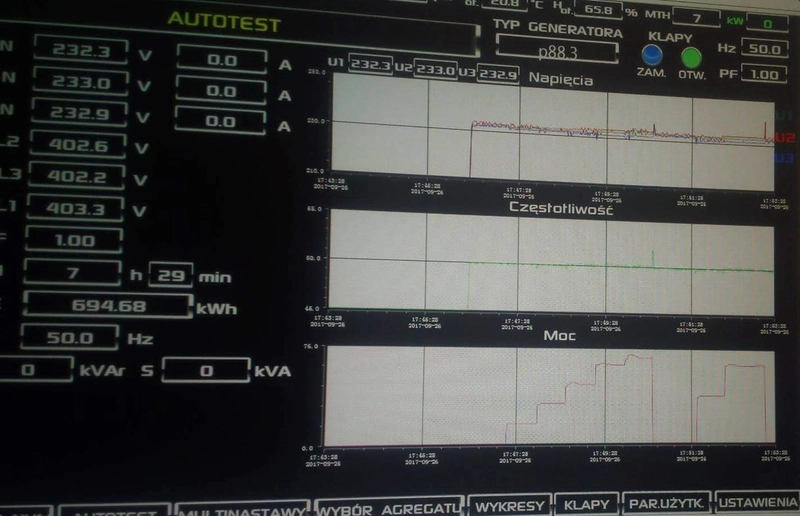- Details
Auto-compensation of load bank
 The auto-compensation function of the electric load bank has a significant impact on the full precision of the tests over the full time range. The article explains the causes of power drops in electrical devices and explains the function of self-compensation of load banks.
The auto-compensation function of the electric load bank has a significant impact on the full precision of the tests over the full time range. The article explains the causes of power drops in electrical devices and explains the function of self-compensation of load banks.
Normal conditions: according to the physical definition "ambient temperature and pressure, which are a kind of reference point for some physicochemical calculations". Normal conditions, which are the basis for most physical calculations, are:
- normal pressure: 101 325 Pa = 1013.25 hPa = 1 atm
- normal temperature: 273.15 K = 0 °C[3]
In addition to these ranges, some physical values, including electrical power, are subject to certain deviations. The electrical power of the devices decreases with increasing temperature.
Why is this happening?
The resistance of the conductors that make up most, if not all, of the components is a temperature-dependent value. The ratio of decrease/increase in resistance varies depending on the type of metal and is described as the temperature coefficient of resistance α (relative change in the resistance of the material when the temperature changes by 1K).
The dependence of resistance to temperature is linear for most metals and the following formula is appropriate for a wide temperature range:
RT=R0(1+α*ΔT)
where:
RT - resistance at temperature T [Ω]
R0 - resistance at the reference temperature T0 [Ω]
α - temperature coefficient of resistance [K-1]
ΔT - temperature change equal to T - T0 [K]
And the resistance, which is expressed by one of the simplest formulas: R = U/I also depends on the voltage and current. In load bank type devices, the voltage remains constant, so in the event of an increase in resistance, the intensity value must decrease.
R - resistance [Ω]
U - voltage [V]
I - intensity [A]
The load bank, both resistive and reactive, is an alternating current receiver, so a simplified formula for apparent power is appropriate here is:
S = UI
S - apparent power [VA]
Where P = S cos φ, where:
P - active power [W]
cos φ - phase shift
To simplify further, for resistive load banks for which cos φ = 1, the active power is equal to the apparent power - depending on the intensity value, which decreases with the increase in resistance <= increase in temperature.
Why is the power drop depending on the temperature important for the load bank?
Load banks are often used with partial power after a few - several minutes, with full - even after a few - several dozen hours. During operation, the temperature rises until it stops at the maximum level. During this time, resistance increased, intensity decreased and the active power dependent on it. The power at a new, lower level will remain until the components are partially cooled.
Auto-compensation of electric load bank
- The load bank knows how much the current power has decreased and calculates which of the additional actuators should be included.
- The load bank has set a slight hysteresis taking into account safety issues in the event of a momentary stroke caused, for example, by improper instantaneous operation of the generator set.
- Additional actuators are switched on and the current power value returns to the rated value (in the case of prior use of the maximum rated power - otherwise: set value)
When can auto-compensation of load banks’ power be useful?
Whenever it is required to carry out tests longer than the time from the load task to the moment of reaching a temperature higher than the one causing the power drop in the intolerable range*.
Auto-compensation of load bank capacity is not only an innovative solution, but also significantly justified economically and ecologically. The auto-compensated load bank primarily allows for fully reliable and precise tests of power systems and their components, without the inevitable loss of power over time.
*auto-compensated power load banks can be used under laboratory conditions
All designs have been simplified.

